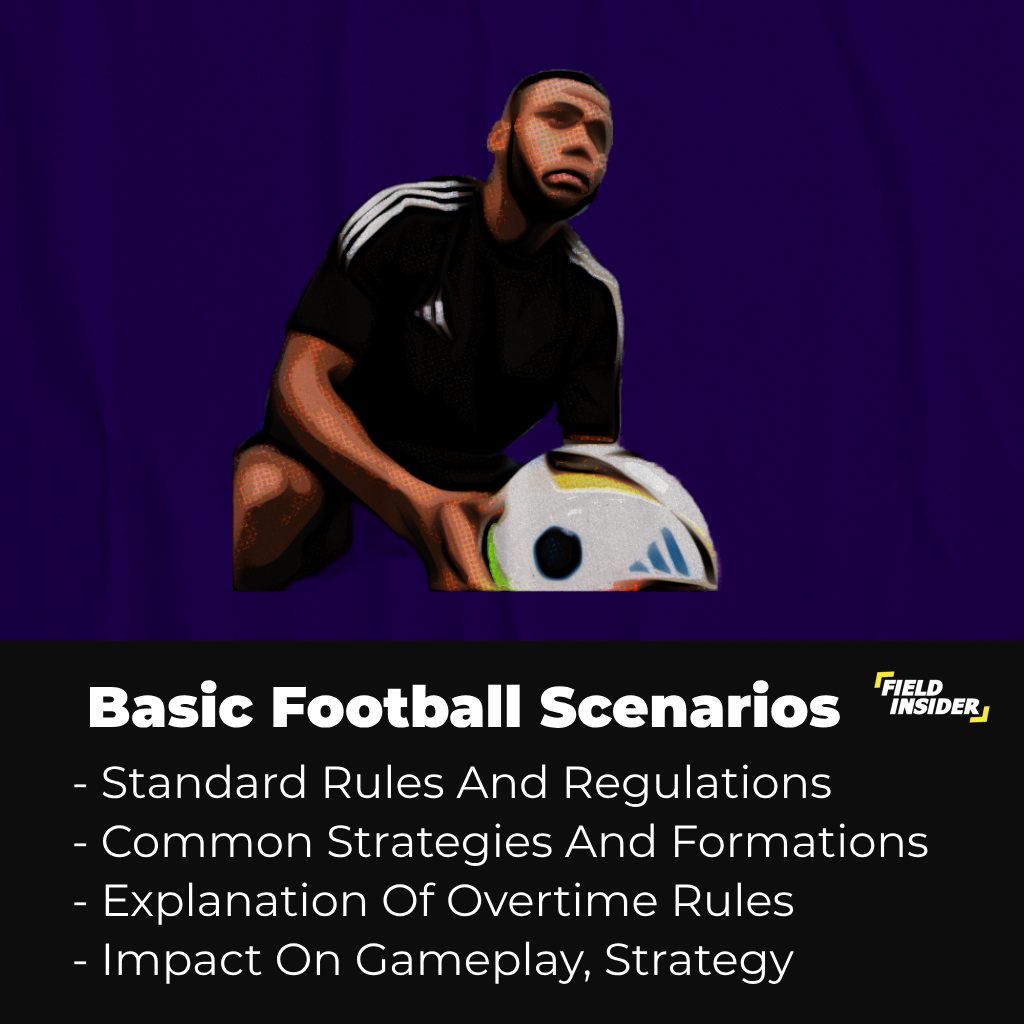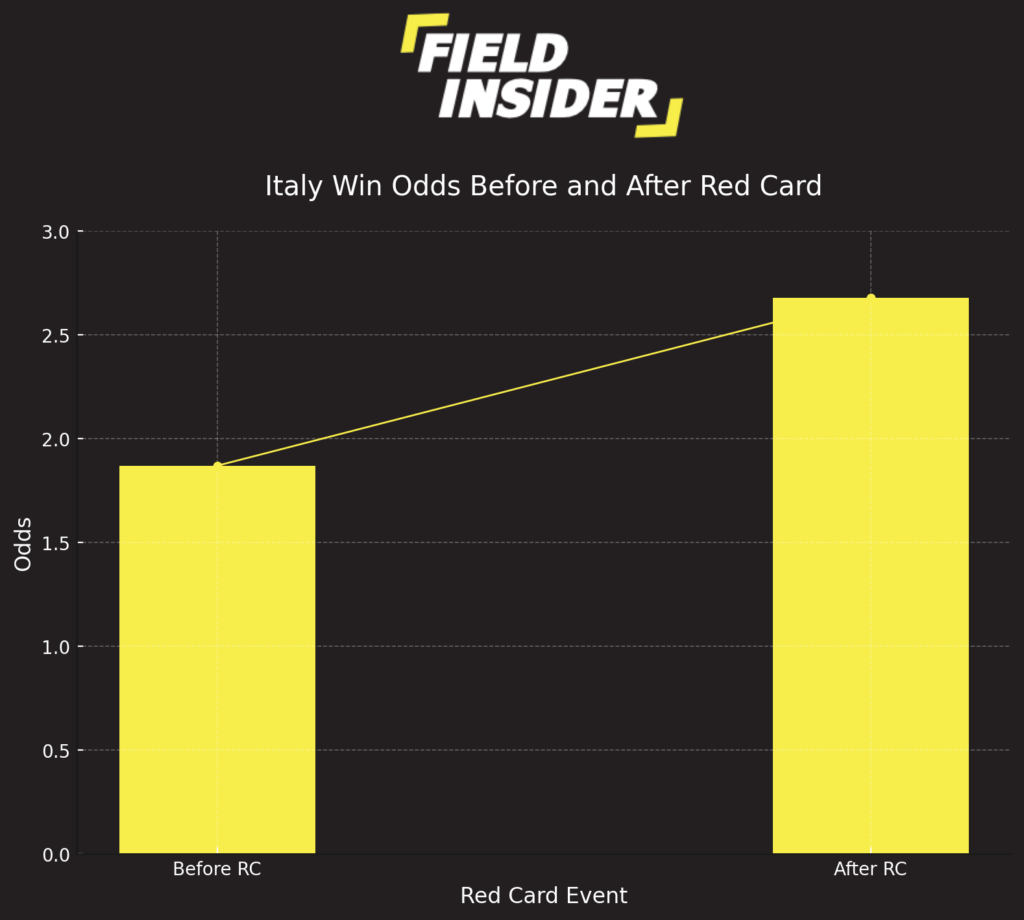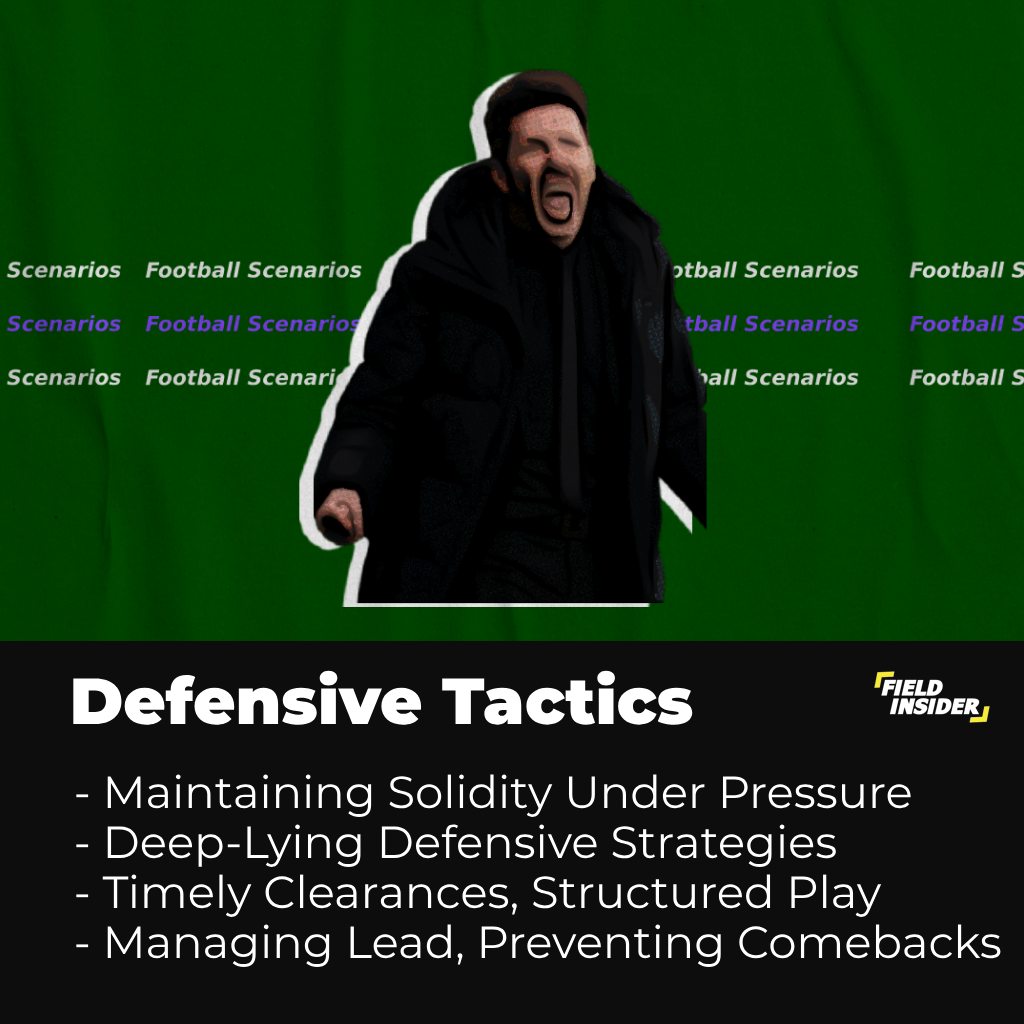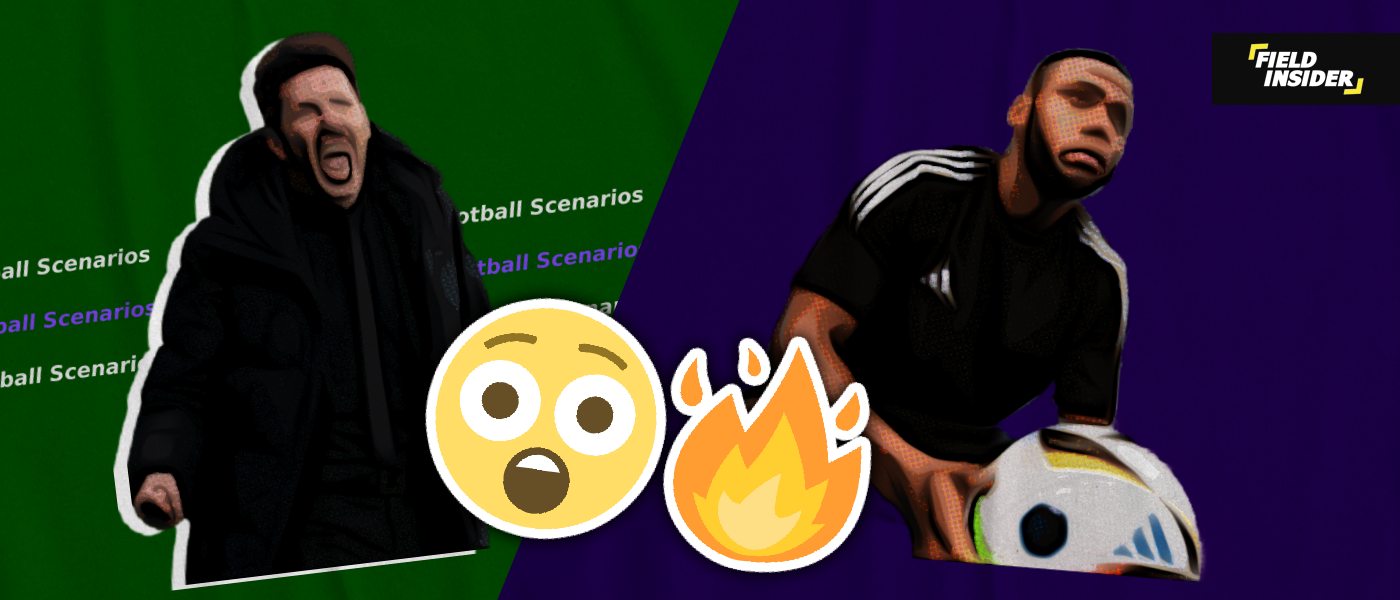Exploring Different Football Scenarios: Full Guide
Welcome to our comprehensive guide on exploring various football scenarios. This article delves into the complexities and strategic nuances of football, enhancing understanding for players, coaches, and fans alike.
From regular gameplay to overtime and beyond, mastering these football scenarios is essential for anyone involved in the sport. Whether you’re developing game plans, or simply enhancing your viewing experience, this guide provides valuable insights into the tactical dynamics that define football.
Key Takeaways
| Scenario | Key Aspect | Impact on Game |
|---|---|---|
| Regular Gameplay | Standard rules and common strategies | Fundamental game dynamics |
| Overtime | Special rules and intensified play | High-stakes decision making |
| Penalty Shootouts | High-pressure moments | Test of nerves and skills |
| Extra Time | Extended play | Stamina and strategic shifts |
| Numerical Disadvantages | Reduced team size | Emphasis on defense and counter-attacks |
| Numerical Advantages | Extra player advantage | Opportunity for control and attack |
Basic Football Scenarios

Regular Gameplay
Overview of Standard Rules and Regulations
Football’s foundation is built on a consistent set of rules, ensuring fairness and clarity across games globally. These standard rules include regulations on play duration, handling fouls, managing offsides, and more.
Every player, coach, and official is expected to understand and adhere to these rules, providing a structured environment for all matches.
Common Strategies and Formations
Strategic depth in football comes from the implementation of various formations, each tailored to maximize team strengths and exploit opponents’ weaknesses.
Teams might deploy a 4-3-3 formation to balance between defense and attack or opt for a 5-2-3 formation when prioritizing a strong defensive line. Choosing the right formation is crucial as it directly impacts player roles, team dynamics, and the overall approach to the match.
Overtime
Explanation of Overtime Rules
Overtime provides an additional period to determine a winner when matches end in a draw after regular time.
This phase consists of two 15-minute halves, as detailed in the overtime rules, where the game continues without the sudden death rule. Teams must continue to compete, even if goals are scored, until the overtime period concludes.
Impact on Gameplay and Strategy
Overtime requires teams to exhibit strategic flexibility and enhanced endurance. Coaches may need to focus on conserving player energy and strategically deploying substitutes to maintain a competitive edge.
The heightened stakes of overtime can prompt significant tactical shifts, with teams either defending deeply to force a shootout or pressing aggressively for a decisive goal.
Uncommon Situations
Penalty Shootouts
Explanation of Shootout Rules
Penalty shootouts are the ultimate test of nerve and skill, used to resolve games that remain tied after overtime. Shootout rules require players from each team to take turns shooting from the penalty spot against the opposing goalkeeper.
The process repeats until a winner is determined, making every shot crucial. Understanding these shootout rules is essential for players and coaches alike.
Strategies for Both Shooters and Goalkeepers
In shootouts, the psychological battle is as significant as physical skill. Shooters must choose their techniques wisely, often deciding whether to prioritize power or placement.
Goalkeepers, on the other hand, benefit from studying shooters’ previous penalties and mastering the art of anticipation. Effective strategies in these moments can be the difference between victory and defeat.
Extra Time football Scenarios

Different Outcomes and Strategies during Extra Time
Extra time offers teams 30 additional minutes to forge a result before possibly facing a shootout. This period often sees varied strategic approaches, such as teams pushing hard for an early goal to avoid the uncertainty of penalties or others reinforcing their defense to secure a shootout.
These critical decisions are influenced by player fatigue, current momentum, and tactical adjustments.
Impact on Player Fatigue and Performance
The extended play of extra time exerts considerable demands on players’ stamina and mental toughness. Coaches must manage their squad effectively, often making key substitutions to inject fresh energy and maintain intensity.
The challenge is to balance aggression with conservation, ensuring that players remain effective without succumbing to fatigue, which can significantly impact their performance and the team’s overall strategy.
Advanced Scenarios
Playing with a Numerical Disadvantage
Strategies for Teams with Fewer Players
Playing with a numerical disadvantage is a tough challenge that demands tactical ingenuity and discipline. Teams often focus on strengthening their defense and minimizing space for opponents to exploit.
Efficient use of counter-attacks can provide opportunities to score, despite reduced numbers. Coaches must adapt their formations and strategies to ensure the team remains competitive.
Importance of Defensive Organization and Counter-Attacking
Solid defensive organization is crucial when playing with fewer players. Teams need to maintain structure and composure to withstand pressure from opponents.
Emphasizing quick transitions and sharp counter-attacks can exploit moments when opponents are unbalanced, potentially leading to scoring opportunities against the run of play.
Playing with a Numerical Advantage
Strategies for Capitalizing on Extra Players
Having an extra player creates an opportunity to dominate the game. Teams with numerical advantages should look to control the match by spreading the play and maintaining possession.
Using the extra man to create overloads on the flanks or through the center can break down even the tightest defenses. It’s essential to continuously probe and pressure the opponent’s weaker spots.
Avoiding Complacency and Maintaining Focus
It’s vital for teams not to become complacent when playing with an advantage. Maintaining focus and continuing to apply pressure are key to capitalizing on the numerical superiority.
The team should avoid underestimating the opponent and stay alert to counter-attacks. Effective game management and continued aggressive play are necessary to secure a win.
The Impact of Numerical Disadvantage: Italy’s Odds in the 2006 World Cup
The chart below is based on study named, “Estimating the Effect of the Red Card in Soccer” . The chart illuminates the immediate shift in betting odds, a testament to the challenges of playing with a numerical disadvantage.

Within the gripping round of 16 match between Italy and Australia, a pivotal moment unfolded as Italy faced a red card at the 50-minute mark. The odds for Italy to win surged from 1.87 to 2.68. This change is a direct reflection of the tactical disadvantage that teams face when playing with one player fewer.
The analysis fits snugly within the narrative of “Playing with a Numerical Advantage,” highlighting the significant challenges and shifts in momentum such a penalty can cause.
Tactical Approaches in Different Scenarios
Offensive Tactics
| Offensive Tactic | Description |
|---|---|
| Adjustments Based On Situation | Tailor attack to game context |
| Exploit Opponent Weaknesses | Target vulnerabilities actively |
| Dynamic Attacking Methods | Adjust methods continuously |
Adjustments Based on Game Situation
Adapting offensive tactics based on the game situation is crucial for success. Teams might intensify their attack when trailing or switch to a more conservative approach when leading.
Selecting the right formation and strategy, such as employing a 4-3-1-2 formation for central strength or a 3-3-4 formation for width, can exploit the opponent’s vulnerabilities at critical moments.
Exploiting Opponent Weaknesses
A key aspect of offensive play is identifying and exploiting the opponent’s weaknesses. This might involve targeting a less experienced player, exploiting space behind attacking full-backs, or overwhelming central areas with numbers.
Teams need to dynamically adjust their attacking methods to continuously challenge the opposition’s defense.
Defensive Tactics

Maintaining Solidity Under Pressure
When under pressure, maintaining defensive solidity is paramount. Teams may shift to formations like 5-4-1 to enhance their defensive barrier or use a deep-lying approach to absorb pressure.
The focus is on disciplined positioning, timely clearances, and cohesive movements to mitigate threats from the opposition.
Strategies for Holding onto a Lead or Preventing a Comeback
Holding onto a lead requires strategic foresight and control. Teams often reduce their attacking thrust and focus more on ball retention and structured play.
Implementing time-management techniques and making tactical substitutions are also effective ways to disrupt the opponent’s rhythm and maintain the advantage until the final whistle.
Case Studies
Analyzing real-life matches where teams faced unique scenarios provides invaluable lessons in strategy and adaptability. For instance, the Champions League final between Liverpool and AC Milan in 2005 showcased Liverpool overcoming a 3-0 halftime deficit.
Similarly, Real Madrid’s consistent success in late-game scenarios highlights their effective use of tactical substitutions and formation shifts, which have been crucial in their numerous come-from-behind victories.
Analysis of Successful and Unsuccessful Approaches
Studying both successful and unsuccessful strategies offers critical insights. For example, Barcelona’s infamous ‘Remontada’ against Paris Saint-Germain in 2017, where they overturned a four-goal deficit, exemplifies the successful implementation of aggressive pressing and offensive overload.
On the flip side, Brazil’s catastrophic 7-1 loss to Germany in the 2014 World Cup semi-finals serves as a cautionary tale about the risks of poor defensive organization and the psychological impact of playing under extreme pressure without key players.
Conclusion
In this guide, we’ve journeyed through the multifaceted world of football, exploring scenarios ranging from everyday gameplay to complex, high-pressure situations. We’ve dissected strategies for both common and uncommon match conditions and delved into tactical adjustments,.
Understanding these different scenarios equips players, coaches, and fans with the tools to enhance their strategic awareness and adaptability during matches. We encourage readers to apply this knowledge to their understanding of football, whether watching a game or participating.








